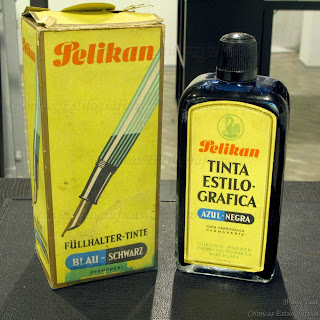
But not only in Europe was this system used. Pilot did also in one of its Super models—the Super 500G, not to be confused with the Super Ultra 500. The Super 500G also features some other quite unique characteristics.

The accordion system is basically a sac with a very specific shape –similar to that of the accordion bellows—that allows it to shorten and enlarge its length and volume. Guided by a rigid frame, a transparent push button at the end performs this operation while acting as ink window. An internal snorkel, like that in a standard aerometric filler, is in place to increase the efficiency of the system by making the ink and the air go through different routes. And indeed this system is efficient—through repeated pushing of the accordion sac the filling seems complete.

The Pilot Super 500G also sports a very unique integrated nib. It is mostly formed by flat facets in different orientations. It is made of 14 K gold and its point is, most likely, an F. It is fairly rigid.
This pen might very well be a predecessor to the later Pilot Elite, launched initially in 1964. Their external shapes and sizes are very similar, and both share the feature of the integrated nib. Their shapes, however, are different, and so are their filling systems.
Bruno Taut
September 1st, 2011
[labels: Pilot, soluciones técnicas, Stylomine]


























































